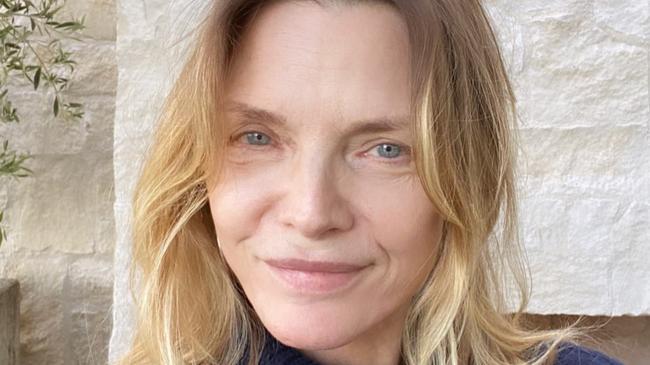Why A-listers are going barefaced
From Michelle Pfeiffer to Tyra Banks, Jennifer Aniston and Jennifer Lopez, these are the stars sparking conversation around ageing skin.

Drew Barrymore marked her recent 47th birthday with a casual bathroom snap, with seemingly zero makeup on. Salma Hayek tagged a bathing suit pic #nomakeup. Gwyneth Paltrow appears to be barefaced in many of the selfies on her personal Instagram feed. Michelle Pfeiffer, Tyra Banks, Jennifer Aniston, Jennifer Lopez, Gabrielle Union, Tracee Ellis Ross, Helen Mirren: They’ve all shared apparently au naturel images too, their faces stripped of Instagram’s typical high gloss.
“There aren’t that many candid shots anymore,” says New York – based psychiatrist and dermatologist Amy Wechsler. “It’s all orchestrated and planned, [with] makeup and hair done.” And thanks to social media, there is now a constant barrage of these images.
“I remember reading through Vogue as a teenager and feeling bad about myself because I didn’t look like that,” Wechsler recalls, “but back then I could put the magazine away. It wasn’t literally in my face all the time.”
Social media’s detrimental psychological impact on teenagers has been well documented, but New York psychiatrist Samantha Boardman thinks we’re not paying enough attention to how it affects women as they age. She says social media can make older women feel just as bad as teen girls, particularly when how a woman looks doesn’t match how she feels.
“We’re also bombarded by images on our phones all the time — this five years ago, this 10 years ago,” Boardman says, “and it’s a reminder of the passage of time and how we do look different.”
When it comes to makeup-free selfies, 55-year-old Halle Berry’s makes more of an impression than 25-year-old Hailey Bieber’s.
“I think [seeing celebrities show their real skin] makes people give more grace to themselves,” says esthetician Joanna Vargas. The dearth of barefaced images of older women helped motivate 56-year-old model Paulina Porizkova’s frequent selfies.
“I post them because I would love to see my peers do the same,” she says. “I have a craving to see real faces of my age, so I don’t feel so alone in ageing.”
The photos can also offer a reminder of what real skin looks like. The seemingly pore-less version generally found on social media is not humanly possible, says Wechsler.
“That image of perfection we project onto [celebrities] is flawed,” says Boardman.
“It’s satisfying to feel connected and not so alone in how you look, so I think there is a generosity in that when it’s authentic.”
But even images with a so-called natural look don’t come without effort.
“There are a lot of products and treatments and injectables, all these contributors to what we then see in a photo of a natural look,” says Boardman. And the “natural” hashtag can grace celeb snaps that have clearly been staged, bolstered by ring lights, sneaky makeup and even a filter; no one, in fact, wakes up like that.
“Often we’re barraged with images that we don’t even know are touched up,” says Wechsler.
The social media effect can be seen in makeup products marketed to mimic what filters do: smoothing, blurring, glowing. But some beauty brands, most notably Ilia, Starface, Milk, Dove and Olay, have made it a point instead to use unretouched photos of models spanning a broad spectrum of age and appearance.
“We are seeing more pores, more texture and more realness in images,” says Vargas.
Has that affected how we perceive our own ageing skin?
“I think people want it to be different, but they’re staring at themselves and they’re finding things they want to fix or change or improve upon,” says Wechsler. As for Porizkova, she can’t wait to see more unfiltered makeup-free selfies from women her age.
“I so appreciate it when I see them,” she says. “While I look with wonder and awe at the women who age backwards, I’d like a little more choice in representation of age. So I hope to provide a little of that for women who feel like I do, that age is coming into one’s true beauty and character, and it should be celebrated, not erased.”
WSJ
